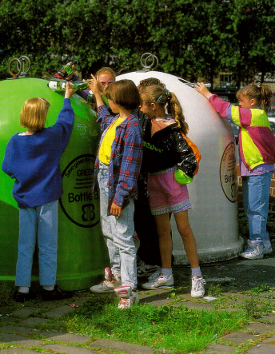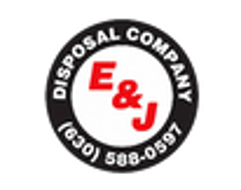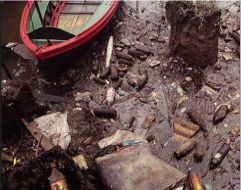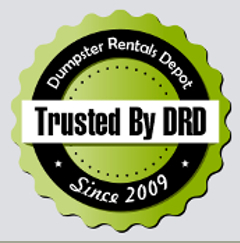Waste Recycling (for kids)

Reusing Building Materials
It is not just household waste that can be recycled. Industry can reuse and recycle materials, too. Building materials such as bricks, tiles, doors, and windows can be taken out of old buildings and used again in new ones. This saves digging raw materials out of quarries, cutting down trees, or making new items in factories. Many companies have programs to reduce the waste their factories produce.
Problems with Plastic
People are using increasingly large amounts of plastic. Plastic waste is increasing by ten percent each year. Recycling plastic is not a simple process because there are so many different types and each has to be recycled separately. A single bottle can be made from three different plastics - a hard plastic for the cap; transparent, flexible plastic for the bottle; and another hard plastic for the flat bottom piece. Manufacturers can help by using fewer plastics in each object. They can also stamp each plastic with a code to make it easier to sort them.
GLASS RECYCLING
Glass is a useful material and is easy to recycle. Glass windows cannot be recycled because they contain a complex mix of chemicals, but glass bottles and jars can be.
Recycling Glass
The raw materials used to make glass are sand and limestone, which are mixed and heated to 2,700°F (1,500 °C) in a furnace until they melt. The liquid glass is blown or rolled into the right shape. When glass is recycled, the different colors of glass are separated and then broken up. The broken glass, called cullet, is dumped in batches into the furnace along with the sand and limestone.
Reusing Bottles
Even more money can be saved if bottles are reused. Milk and soft drink bottles, for example, can be collected and taken back to the manufacturer, who washes them and fills them again. Often it is possible to reuse a bottle many times before it needs to be recycled.
Saving Materials
Recycling glass means that less sand and limestone have to be quarried to make new glass. Also, cullet melts at a lower temperature than do sand and limestone, so the furnace does not need to be as hot, and this saves energy. However, the cost of transporting the collected glass for recycling can be greater than that of bringing raw materials from quarries to the glass factories.
RECYCLING METALS
Many metals exist in the ground as ores-mixtures of metal and other materials. Each ore has to be dug from the ground and treated to extract the metal. This process uses up a lot of energy and leaves behind a lot of waste rock.
Melt Down
Recycling metals saves resources and reduces the need to dig new ore from the ground. Therefore, recycling produces less waste. Also, some metals, such as gold, silver, and titanium, are in short supply so are too valuable to throwaway.
An All-'Purpose Metal
Aluminum is made from an ore called bauxite. In countries such as Australia and Ghana, bauxite is quarried from the ground and transported to aluminum smelters, where it is crushed and heated so that the metal can be extracted. Aluminum is a light, but strong, metal that is ideal for making cooking foil and garden furniture.
Aluminum needs to be separated from iron and steel for recycling. Use a magnet to distinguish between the metal or drink cans. Iron and steel are magnetic, so a magnet will stick to them. Magnets do not stick to aluminum as it is not magnetic.
Fewer Quarries
Most drink cans are made from metals such as aluminum and steel. The average person in the United States uses 130 drink cans a year. As more aluminum is used, more bauxite has to be quarried. Often, tropical rain forests are cleared to make way for the quarries.
By recycling aluminum, the rain forests can be saved. Less oil is needed to transport the bauxite to the smelter, and less energy is needed to extract the metal. If we repeatedly recycled all the aluminum and other metals we used, we would need far fewer new supplies.
PAPER RECYCLING
Wood is the main ingredient of paper. Most of the wood we use comes from conifer trees that are grown as a renewable crop. New paper can also be made from recycled paper. Nowadays, most developed counties recycle more than half their paper.
Making Paper
Timber is taken to a pulp mill where it is reduced to a sawdust-like pulp. The pulp is transported to a paper mill where it is mixed with water and chemicals. The mixture is spread out and the waste-water drains away, leaving a thin sheet of paper. Recycled paper is made the same way, except that pulped wastepaper replaces some or all the wood pulp.
Good-quality paper is made from long fibers of wood. During recycling, the fibers get shorter and this reduces the quality. Even so, recycled paper is fine for newspapers and packaging.
Saving Energy
Recycling paper conserves energy and resources and does not produce any waste timber. Energy is needed to cut down the trees, to transport the logs, to chop them up, and to pulp them. Still more energy is used to transport the pulp to the paper mill, where it will be made into paper.
Fewer Plantations
Recycling paper does not really save trees. Most wood pulp comes from fast-growing conifers or eucalyptus that are grown in plantations.
However, conifer plantations are not particularly attractive, and they do not support as much wildlife as natural woodland. New plantations are being established on land that was once grassland or peat bogs, too. Recycling paper reduces the need to destroy these natural wildlife habitats.
WHAT CAN YOU DO?
There are all sorts of ways that you can help when dealing with waste. Just remember these three words:
reduce
,
reuse
, and
recycle
.
Reduce, Reuse, Recycle
First, try to reduce the amount
of waste you and your family
produce. Everything you buy has
used energy in some way, so only
buy things you really need.
Before you throw something
away, think about what will
happen to it. Reuse means that
you try and put an item to a new
use. Finally, if you cannot reuse
something, try to recycle it.
Less Packaging
One way to reduce waste is not to buy items with lots of packaging. Simple packaging for food is important because it keeps it clean and fresh. But often packaging is designed to make something look good and to tempt you to buy it. Layers of fancy packaging are a waste of resources. They will only end up in the trash when you get home.
Local Recycling
Find out if there is a recycling program in your neighborhood or school. You can contact an Environment Protection Agency or you can talk to a local waste hauling company. In London, ON, for example, you can call Orange Dumpster Rental to learn more about waste disposal in London or recycling programs in London, Ontario . If you leave close to Edmonton, AB, then call Busy Bins for professional consultation on dumpster rental in Edmonton and waste hauling & recycling in Edmonton, AB . Than check through your garbage for glass, paper, metal, and plastic. Keep these items separate and take them to the nearest recycling point. Wear gloves if you are handling hazardous items.
Old Clothes for New
Old clothes can either be sold at Goodwill Stores or sent for recycling. The wool form old sweaters can be respun and made into new yarn. Cotton can be made into high-quality paper, and synthetic fabrics can be made into stuffing for furniture.
On a Global Scale
Around the world, governments are setting up recycling programs or conserve the resources of their countries and to cut down on the amounts of waste they produce and have to treat. They are also cooperating on treating hazardous chemicals, such as nuclear waste; reducing illegal dumping at sea; and reducing global warming.
- Published: 2013-07-07T12:54:07-07:00
- Author: John Danna




